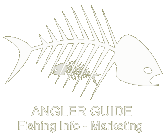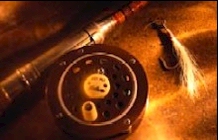August A. Busch
Memorial and Weldon Spring Conservation Areas
The Busch /Weldon
Spring Areas receive over 125,000 fishing trips
annually on just 574 acres of water. This means
many of the lakes are fished heavily. MDC tries to
prevent over harvest through more restrictive
regulations. Following these regulations will help
sustain the fishery for the future.
The Kids-Only
fishing lake on the area has been a popular place
for the kids, but not too crowded. Lake 12 is open
year-round for kids ages 15 and under. It is an
excellent place for kids to catch 6-8" hybrid
sunfish, channel catfish and bass. Fish with
crickets and worms around brush piles, stumps and
weed beds. Special regulations apply.
The lakes where
largemouth bass are plentiful, but most are
smaller than the 15" length limit, are lakes 16,
21, 22, 23, 27, 28, 31, 34 and 37. Use small
spinner baits, crankbaits, and topwater baits
along rocky shorelines, brush piles, and in weedy
coves for best results. These are great lakes to
practice your hook setting skills as indicated by
our spring samples with electrofishing catch rates
in excess of 200 bass per hour. The best lake for
big largemouth bass is Lake 33 where 62% of the
bass were larger than 15" and 20% were larger than
18" from a sample of 144 bass caught this spring.
Lakes 5, 6, 7, 12, 24, 30, 35, 38, and will also
have 25-55% of the bass population larger than 15"
and 10% larger than 18 inches.
Remember there is
an 18" minimum length limit on lakes 33 and 35. In
spring and fall bass will be in shallow water and
can be caught on spinnerbaits, jig and pig, and
crankbaits. In the summer, fish go to deeper,
cooler water. Bigger bass can be caught along the
rock dams and dropoffs near log structures.
Plastic worms, crankbaits, and jig and pigs are
productive in early morning and evening hours.
Seven-inch crappie
will again be plentiful in Lake 33, 35, and 30.
Please remove all sizes of crappie up to the daily
limit of 30. Although you can pick up occasional
13 - 15" crappie in Lake 33, less than 10% are
>8". Better lakes to catch larger crappie are
Lakes 6, 8, 34, 35, and 37. The best crappie
fishing is from mid-April through mid-May . There
is also some good fall crappie fishing in October.
For bait bring an assortment of jigs and a bucket
of minnows. Since you should fish around the brush
piles, bring extra hooks, bobbers, and sinkers.
Channel catfish
will be best in lakes 3, 4, 5, 7, and 24 where one
pound catfish are stocked bimonthly May through
September. Lakes where channel catfish greater
than 10 pounds are consistently caught are lakes
33, 34, and 35 and Prairie Lake on Weldon Spring
Conservation Area.
Flathead catfish
have a minimum length limit of 24" and are most
common in 33 and 35. Live bait fished in rootwads
along the rock dams will produce the best results.
Try the shallow
coves of lakes 20, 24, 30, 34, 37, and 38 for the
best grass carp fishing. Anglers must be patient
and sit still to catch grass carp, whether they
use canned corn, tomatoes, or other plant based
bait. This under-utilized type of fishing can
reward anglers with the 20-50 lb fish of a
lifetime. For anglers who enjoy fishing for common
carp, Lake 33 and the Femme Osage Slough on Weldon
Spring are your best bets.
Bluegill >7" should
be best in lakes 6, 8, 9, 10, 22, 34, 37, and 38.
If you just want lots of action try lakes 10, 20,
21, and 30 where there are lots of 4-6" bluegill.
Try fishing for redear sunfish in lakes 6, 20, 21,
30, 34, 35, 37, and 38. Redear will not be as
numerous as bluegill, but there are Master Angler
sized redear >10" in all of these lakes. Fish with
worms or crickets on the bottom near weedbeds.
Sunfish (bluegill, redear, and green sunfish in
combination) bag limit is 10.
Trout are stocked
in several lakes from November to February on the
Busch Conservation Area. The fishing is excellent
through the winter months for rainbow trout. Call
for specific details or pick up a trout brochure
at Regional Office.
If you like to
catch a lot of fish and release them, Lakes 16,
31, and 32 are CATCH-AND-RELEASE-LAKES. Only
artificial lures may be used and fish must be
returned to the water unharmed immediately after
being caught.
Muskies in
the 30-36" inch size range are occasionally caught
at Lake 35. Large rattle traps have been most
productive. The size limit is 36 inches for
muskies- please practice catch-and-release for
these trophies.
Lakes 6, 15, 33,
and 34 have facilities for persons with
disabilities, including parking areas, paved
ramps, wheelchair accessible picnic tables and
rest rooms. In addition, Lake 6 has paved fishing
jetties and lakes 15, 33, and 34 have floating
covered docks.
Lakes 1, 2, and 15
are used for Aquatic Resource Education and closed
to public fishing. Lake 11 and 19 are closed after
renovations to allow fishing populations to
develop. |





